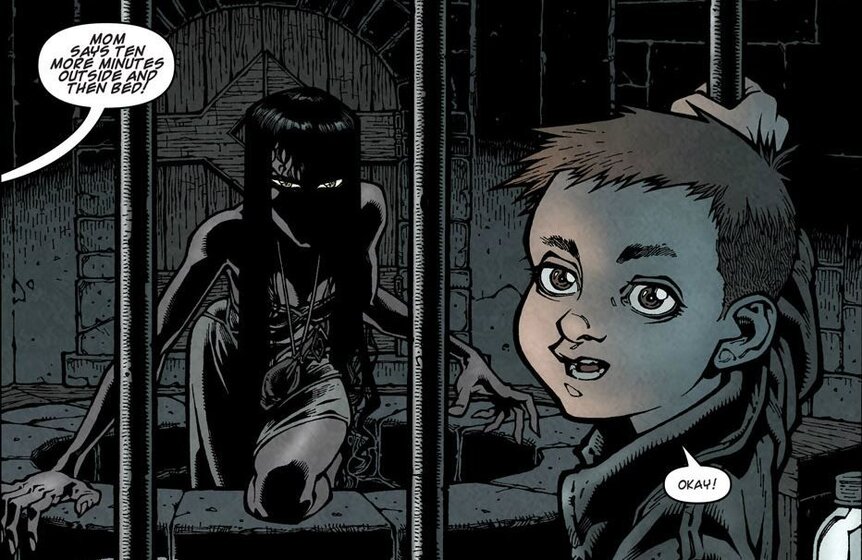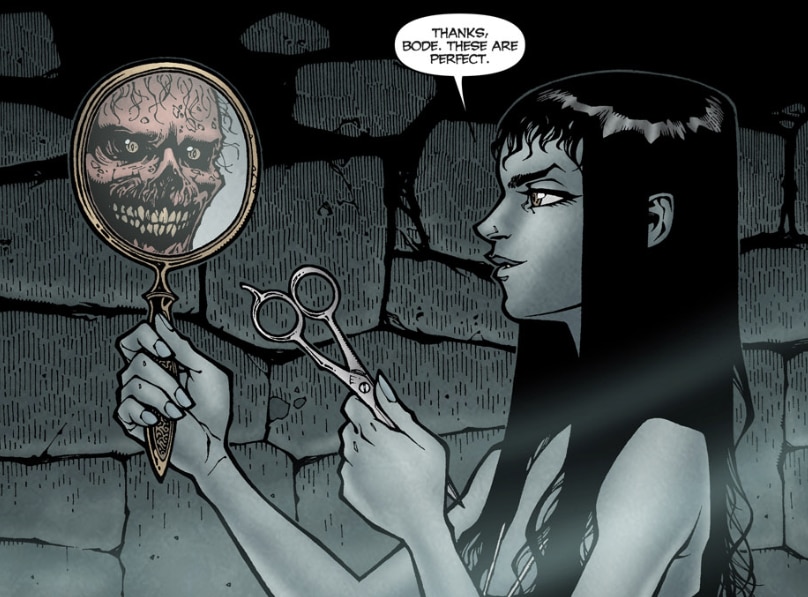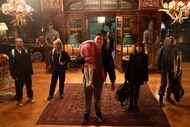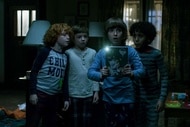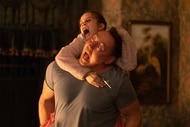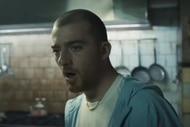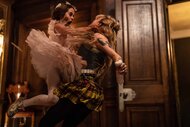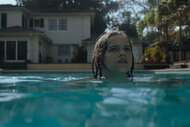Create a free profile to get unlimited access to exclusive videos, sweepstakes, and more!
Locke & Key's scariest scene could only happen in a horror comic
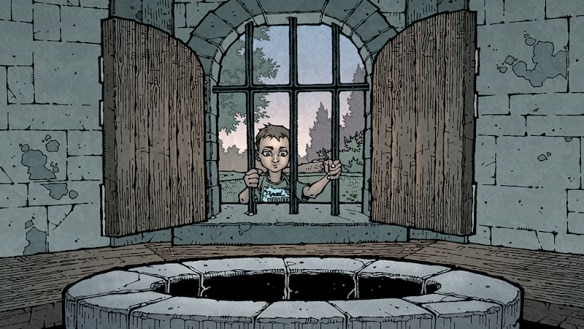
Comics tell stories in ways that cannot fully translate into any other medium. This sequential narrative art what makes the form so singular, so special. But at the same time, the comic page lacks the motion of film and (occasionally) the interior language of prose. Some beats, stories, and moments simply can't be carried from one to the other. Few genres suffer for this quite like horror comics. When they're adapted for the screen, like Joe Hill and Gabriel Rodriguez's comic Locke & Key, they are inevitably changed.
The beat and structure of traditional motion-picture scares are incredibly difficult to replicate in comics. Through film, a director has the luxury of controlling the pace at which the viewer experiences the story. In comics this is impossible. The pace at which the story moves, at least in terms of the experience of consuming the story, is entirely in control of the reader. That pace is one of the more vital elements in creating effective scares in visual storytelling, especially with regard to jump scares or moments of shock.
This isn't a knock on horror comics at large — there are a litany of great ones, from classics like Alan Moore's Swamp Thing run to recent hits like Black Stars Above. But in order for horror to work well in comics, the creators behind the medium had to create a new visual language through which the conventions of horror could thrive on the comic page. This has largely meant eschewing elements of horror made popular via film.
It's why "the well" scene in the first volume of Locke & Key remains such a revelation.
Jump scares are near-impossible to pull off on the comic page. Because of the way your eyes engage with the entirety of a page (even if you don't mean for them to) before they engage with individual panels, even a jump scare structured around the turn of a page is hard to pull off well. So when they do work, they make for a hell of a WTF moment. The first volume of Joe Hill and Gabriel Rodriguez's Locke & Key (titled Welcome to Lovecraft) is among the best of them.
The series, which has been adapted for Netflix, revolves around the Locke siblings (Tyler, Kinsey, and Bode) as they move to their father's old home, a vast and mysterious manor called Keyhouse, in the wake of his murder. From the jump there's clearly more to the house than meets the eye, a suspicion soon confirmed when Bode, the youngest of the siblings, begins conversing with a disembodied voice coming from the well in the house's backyard.
Right away we know something is up on account of the fact that, you know, it's a voice coming from a well talking to a little kid. The voice tells Bode that it's "his echo," though we (and Bode) soon see that the voice is coming from a mysterious woman. Slowly she begins to divulge in Bode the secrets of Keyhouse, leaving the reader to wonder just how it is that she knows all of this (and how she ended up in the well to begin with…).
The Echo later manipulates Bode into bringing her a mirror and a pair of scissors, and in the reflection of that mirror we see, for but a single panel, a rotting corpse — our first look at what the Echo really is. But it doesn't stop there.
The moment Locke & Key cements itself in the hierarchy of comics greatness comes later, when Bode finally asks the question we've been begging him to ask all along: "If you're my echo, why don't you look or talk more like me?" He asks this question from outside of the well house, perched upon a windowsill with his legs dangling inside over the side. As the panels progress, he switches his flashlight on and off, the 8-panel grid running across the pages establishing a sort of rhythm to the motion. All along, we never see the Echo, only hearing her voice as it creeps up from the bottom of the well.
"You aren't my echo," Bode says, "I don't know what you are. You said I made you. But I think you were already here." The dialogue runs out on the last panel of the page to no response from the Echo but a quiet gasping of, "...air...air…"
It's crucial to note here that despite the ratcheting up of the scene's tension as it progresses, there's no promise of a scare when you turn the page. Maybe that adds to the effectiveness of the moment, because when the page is turned, you're greeted to the sight of Bode turned away from the well to answer the call of his sister. His eyes are away from the well... missing what's just crawled out of it.
The shadowy form of the Echo now crawls out of the well we've long assumed served as her prison, and she's crawling right towards Bode. Words don't do it justice — it's terrifying. Hill and Rodriguez have done such a killer job of establishing Bode as this relentlessly curious, innocent kid. Seeing him in any kind of danger is stressful (and hoo boy, does he get into some over the course of the series) but the circumstances of this particular scare are pretty unparalleled. It's a moment you know is coming eventually but don't necessarily expect at the turn of that particular page — which makes it all the more shocking.
The Echo, who is soon revealed to be series antagonist Dodge Carravagio, commits all manner of torture, murder, and dismemberment over the course of the series, but he's never quite as terrifying as he is in that moment, a spindly silhouette creeping towards the character over whom the reader feels the most protective.
But the reason it really warrants such a massive WTF reaction is because of how seamlessly it translates a technique usually confined to film to the comic page. That's such a magic trick in and of itself you can't help but feel more caught off guard by it. The Netflix series can't hope to make their take on this scene more effective — it's now a film trick in a filmed medium, not the work of two stellar craftsmen making the impossible possible.
